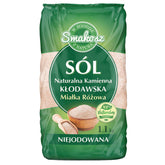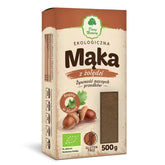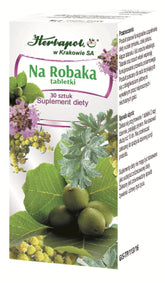Filter
11 results
20
- 10
- 15
- 20
- 25
- 30
- 50
Best selling
- Featured
- Best selling
- Alphabetically, A-Z
- Alphabetically, Z-A
- Price, low to high
- Price, high to low
- Date, old to new
- Date, new to old
Sort
Sort by:
- Featured
- Best selling
- Alphabetically, A-Z
- Alphabetically, Z-A
- Price, low to high
- Price, high to low
- Date, old to new
- Date, new to old
-
White Quinoa Quinoa 1000g TARGROCH
INGREDIENTS White quinoa. nutritional value of the product Per 100g energy value 1540kJ / 368kcal Fat - including saturated fat 6.07g 0.706g carbohydrates - including sugar 64.14g 0.1g fiber 7g protein 14.12g Salt 0.012g td> Use : The quinoa should be rinsed before cooking...- €7,60
- €7,60
- Unit price
- / per
View details -
White quinoa (quinoa) gluten-free BIO 4 kg - HORECA
INGREDIENTS white quinoa (quinoa) * 100% (* ingredient from certified organic farming) DESCRIPTION Organic white quinoa, also known as quinoa. It successfully replaces traditional groats or pasta. It is perfect as an ingredient in soups and as an addition to vegetables, sauces, baked goods...- €39,37
- €39,37
- Unit price
- / per
View details -
BIO quinoa red quinoa 1kg BIO PLANET
USES : Quinoa has a slightly sweet taste, so it is suitable for the PREPARATION of main courses as well as dessert & oacute;w. Quinoa can replace rice, grits, potatoes and pasta. It can also be an ingredient in soups, stews or salads. Quinoa...- €12,51
- €12,51
- Unit price
- / per
View details -
White Quinoa Quinoa 500g TARGROCH
INGREDIENTS White quinoa. nutritional value of the product Per 100g energy value 1540kJ / 368kcal Fat -including saturated fat 6.07g 0.706g carbohydrates - including sugar 64.14g 0.1g fiber 7g protein 14.12g Salt 0.012g td> Use : The quinoa should be rinsed before cooking to...- €5,00
- €5,00
- Unit price
- / per
View details -
Red quinoa (quinoa) BIO 250 g - BIO PLANET
INGREDIENTS Red quinoa (quinoa) * 100% (* from certified organic farming) span > DESCRIPTION b > Organic Red Quinoa, also known as Quinoa. It successfully replaces traditional groats or pasta. It is perfect as an ingredient in soups and in addition to vegetables, sauces,...- €4,57
- €4,57
- Unit price
- / per
View details -
White quinoa (quinoa) BIO 1 kg - BIO PLANET
DESCRIPTION Organic White Quinoa, also known as Quinoa. It successfully replaces traditional groats or pasta. It is perfect as an ingredient in soups and as an addition to vegetables, sauces, baked goods and desserts. INGREDIENTS white quinoa (quinoa) * 100% (* from certified organic...- €17,82
- €17,82
- Unit price
- / per
View details -
White quinoa (quinoa) BIO 250 g - BIO PLANET
INGREDIENTS white quinoa (quinoa) * 100% (* from certified organic farming) DESCRIPTION Organic white quinoa, also known as quinoa. It successfully replaces traditional groats or pasta. It is perfect as an ingredient in soups and as an addition to vegetables, sauces, baked goods and...- €4,55
- €4,55
- Unit price
- / per
View details -
White quinoa (quinoa) BIO 500 g - BIO PLANET
INGREDIENTS white quinoa (quinoa) * 100% (* certified organic ingredient) DESCRIPTION Organic white quinoa, also known as quinoa. It successfully replaces traditional groats or pasta. It is perfect as an ingredient in soups and as an addition to vegetables, sauces, baked goods and desserts....- €6,95
€7,12- €6,95
- Unit price
- / per
Save €0,17View details -
Black quinoa (quinoa) BIO 500 g - BIO PLANET
INGREDIENTS black quinoa (quinoa) * 100% (* from certified organic farming). DESCRIPTION Organic black quinoa, also known as quinoa. It successfully replaces traditional groats or pasta. It is perfect as an ingredient in soups and as an addition to vegetables, sauces, baked goods and...- €7,00
- €7,00
- Unit price
- / per
View details -
Tricolor quinoa BIO 500 g - BIO PLANET
INGREDIENTS white quinoa *, red quinoa *, black quinoa * ( * from certified organic farming) DESCRIPTION Organic tricolor quinoa successfully replaces traditional grits or pasta. It is perfect as an ingredient in soups and as an addition to vegetables, sauces, baked goods and...- €7,04
- €7,04
- Unit price
- / per
View details -
Red Quinoa (Quinoa) BIO 500 g - BIO PLANET
COMPONENTS xml: namespace prefix="o"ns="urn:schemas-microsoft-com:office:office"/> red quinoa (quinoa) * 100% (* from certified organic farming) DESCRIPTION Organic red quinoa, also known as quinoa. It successfully replaces traditional groats or pasta. It is perfect as an ingredient in soups and as an addition to vegetables, sauces,...- €7,46
- €7,46
- Unit price
- / per
View details


























































































































